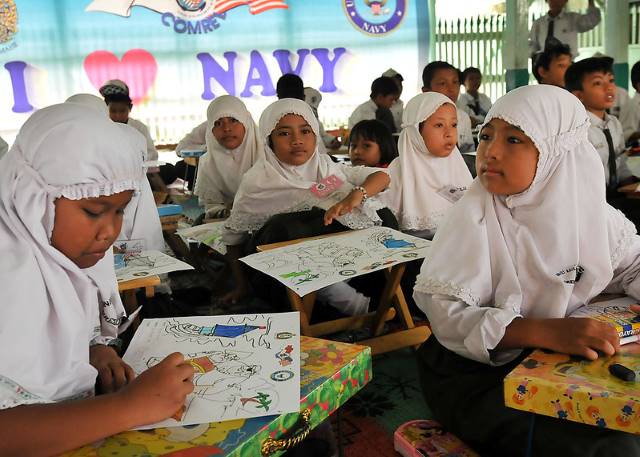3 Steps to Improve Education in Indonesia
 As it stands, education in Indonesia lacks inclusivity and accessibility. The education system in Indonesia struggled from the start, making it harder to reform years of damage. However, there are steps being taken to improve the learning experience of Indonesian children and adolescents. This includes technology use, improved teacher education and more adequate education spending.
As it stands, education in Indonesia lacks inclusivity and accessibility. The education system in Indonesia struggled from the start, making it harder to reform years of damage. However, there are steps being taken to improve the learning experience of Indonesian children and adolescents. This includes technology use, improved teacher education and more adequate education spending.
Education in Indonesia
Reports indicate that compared to other Southeast Asian countries, education in Indonesia is lacking in quality and effectiveness. For example, statistics display that 55% of students who pass through the Indonesian education system are functionally literate. This is high when compared to 14% in Vietnam.
Currently, education is compulsory in Indonesia and offered free of cost up until grade nine. Although the government is working on providing free schooling for grades 10-12, this has not yet been achieved. Early education is prioritized and there are high rates of pre-school attendance. Yet, there are disparities between genders and between urban and rural areas. For example, the nationwide preschool GER (gross enrollment ratio) is significantly lower in Papua and Maluku, Indonesia’s remote islands, at less than 50% in 2014.
Tertiary education attainment rates are also very low in Indonesia. The percentage of Indonesians above the age of 25 that had obtained, at minimum, a bachelor’s degree in 2016, was less than 9%. This rate is the lowest of all the member states of the Association of Southeast Asian Nations (ASEAN). There is little incentive to complete tertiary education as the unemployment rate is high, even for those with degrees.
Teacher Education
Until the mid-2000s, Indonesian teachers could teach with just a diploma in the field. In fact, many elementary teachers held only a secondary school qualification. According to statistics, only 200,000 out of 1.25 million teachers had a university degree in 2006. However, legislation has made quality teacher education a priority. Presently, all teachers are required to have completed a four-year higher education in the form of a degree or a high-level diploma. Moreover, in order to be deemed qualified as a public school educator, one must undergo more rigorous certification and training requirements.
Technology for Remote Learning
As of early 2020, COVID-19 added further challenges to education in Indonesia and its already unstable system. COVID-19’s severe effects inhibited Indonesian students from attending school in person yet many of them lack access to internet and are unable to participate in remote learning. However, a recent initiative to collect second-hand cellphones may improve the education situation for Indonesian students.
Ghina Ghaliya, a journalist in Jakarta, was inspired to find a solution to this problem. When the pandemic started, Ghaliya started a group with 11 other journalists, providing food and money to underprivileged Indonesians. However, during the pandemic, the group shifted its focus to enable children to continue learning remotely. Ghaliya and her journalist friends began collecting second-hand cellphones and monetary donations so that children could acquire internet access for their classes. As of November 2020, 200 phones were collected and more than $35,000 worth of donations were given to the group to acquire more cellphones and prepaid internet plans.
Education Spending
Government expenditure on education has increased in recent years. Added funding allows for a more enriching learning experience for Indonesian students. For example, with increased spending, there has been a larger budget for hiring more teachers. As of 2017, the student-to-teacher ratio dropped from 20:1 to 16:1 in elementary schools. This exemplifies how with further spending and more teachers per student, one’s learning experience is augmented.
The education system in Indonesia does not adequately and equally serve its students. However, with initiatives such as allocating money toward education, improving teacher education and incorporating technology into curriculums, education in Indonesia is improving.
– Ella Kaplun
Photo: Flickr
